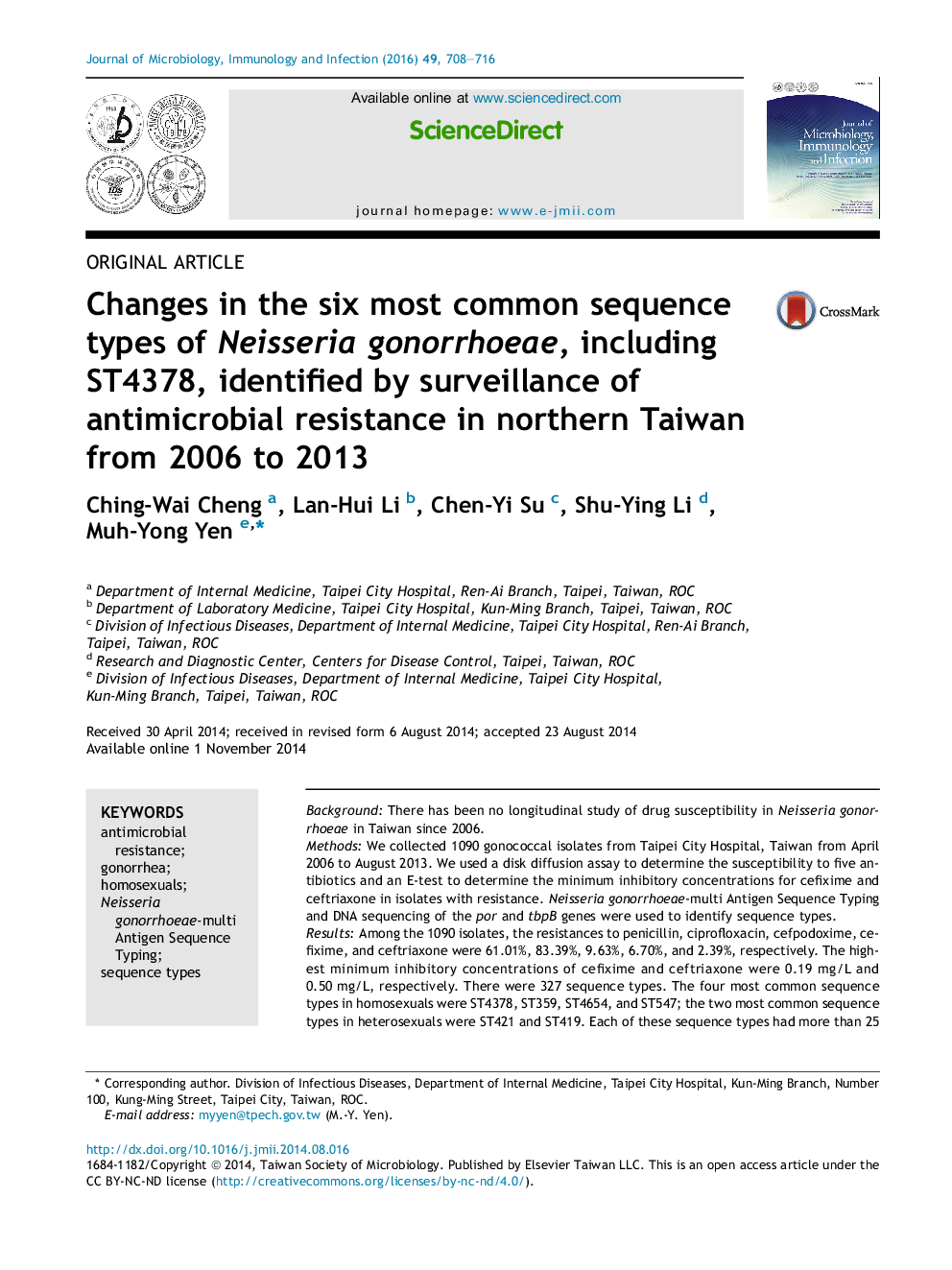| کد مقاله | کد نشریه | سال انتشار | مقاله انگلیسی | نسخه تمام متن |
|---|---|---|---|---|
| 5669074 | 1407937 | 2016 | 9 صفحه PDF | دانلود رایگان |

BackgroundThere has been no longitudinal study of drug susceptibility in Neisseria gonorrhoeae in Taiwan since 2006.MethodsWe collected 1090 gonococcal isolates from Taipei City Hospital, Taiwan from April 2006 to August 2013. We used a disk diffusion assay to determine the susceptibility to five antibiotics and an E-test to determine the minimum inhibitory concentrations for cefixime and ceftriaxone in isolates with resistance. Neisseria gonorrhoeae-multi Antigen Sequence Typing and DNA sequencing of the por and tbpB genes were used to identify sequence types.ResultsAmong the 1090 isolates, the resistances to penicillin, ciprofloxacin, cefpodoxime, cefixime, and ceftriaxone were 61.01%, 83.39%, 9.63%, 6.70%, and 2.39%, respectively. The highest minimum inhibitory concentrations of cefixime and ceftriaxone were 0.19 mg/L and 0.50 mg/L, respectively. There were 327 sequence types. The four most common sequence types in homosexuals were ST4378, ST359, ST4654, and ST547; the two most common sequence types in heterosexuals were ST421 and ST419. Each of these sequence types had more than 25 isolates. There were significant differences in the sequence types in patients with different sexual orientations (p < 0.001).ConclusionOral cefixime or ceftriaxone injections were used as first-line drugs for the treatment of gonorrhea from 2006 to 2013 because gonorrhea isolates had low minimum inhibitory concentrations for these two drugs. The abrupt emergence of ST4378 (closely related to the notorious ST1407) since 2009 is a cause for alarm. Changes in sexual behavior, including an increase in sexual activity without the use of condoms, may have contributed to the peak in gonorrhea in 2010. Further molecular epidemiological investigations are required.
Journal: Journal of Microbiology, Immunology and Infection - Volume 49, Issue 5, October 2016, Pages 708-716